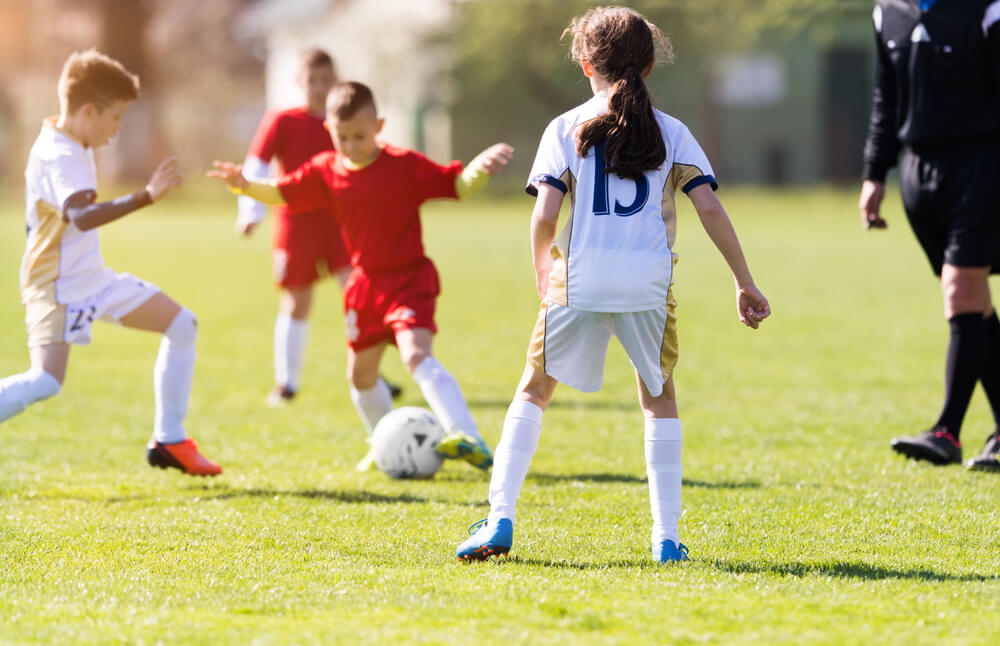Without a doubt, a sprained ankle in kids is a pretty common sight in most pediatric centers and ERs. And even though the injury is most prevalent in older children who are active and athletic, competing in little league sports, a toddler may also suffer from a sprained ankle, especially if they are always on the move, striving to discover the world around them.
And let’s be honest, it’s enough for even the most vigilant parents to take their eyes off their little one, only for a second, to find that the toddler is off, and sometimes, the injury is inevitable. More specifically, this could be a part of the “toddler learning curve.”
As such, this article will focus on sprained ankles in kids and will give a few valuable tips if an accident does happen. Also, don’t forget, if you want to learn more from an excellent sports medicine doctor in Plantation and Doral, FL, you can always reach out to us.
About Kid and Toddler Ankle Sprains
Medical experts define sprains as partial rupture, complete rupture, or the stretching of the ligament(s) (tissue that’s stretchy and tough). The ankle consists of three different bones, and the ligaments are responsible for holding them together and stopping the ankle joint from unnecessary movement.
Experts estimate that more than two million of these ankle sprains happen in the US alone each year (normally, not all of them are toddler ankle sprains), and most of them occur while the patient participates in sports or similarly active activities.
Sprains often occur in sports requiring players to change directions quickly, such as tennis, basketball, volleyball, tennis, and so on. As a matter of fact, sprained ankle in kids is the most common, as young athletes between the ages of ten and 19 years old are the highest-risk age group.
Now that you know the injury’s background and are familiar with the most injury-prone category of kids, we’re going to delve into the nature of kid and toddler ankle sprains and what to do when they happen.

When Should You Call a Doctor?
While not all injuries call for intensive pediatric ankle sprain treatment, every sprain should be assessed by a professional just to be on the safe side. A lot of people think that sprains are only mild injuries that will heal fine on their own. The truth is these injuries have the potential to lead to chronic ankle instability and pain if not treated properly. Regardless of whether the issue is with a sprained ankle in a toddler or a young athlete, schedule an appointment with a pediatrician as soon as possible to examine the injury. While most sprains cause damage to the ankle’s outside portion, it’s always a good idea to get it checked as if the damage happened on the inside portion; untreated problems can lead to lasting consequences.
Here are a few signs that can tell that the sprain requires evaluation:
- Bearing weight on the hurt ankle is difficult or impossible
- Pain on the foot or the ankle’s inside
- The foot and ankle look deformed
- The ankle, foot, or even leg is bruised and swelled up
Diagnosing Sprained Ankles in Toddlers, and Young Children
Usually, a physical examination can be enough to diagnose a sprain injury. Furthermore, these ankle sprains are also graded based on functional loss, ranging from grade I to grade III.
Grade I sprains: The child will experience tenderness and mild swelling. Still, on examination, there won’t be any joint instability, meaning that the young athlete or toddler will still be able to move about and bear weight on the hurt ankle with only minimal pain. Not a lot of grade I injuries get assessed in healthcare offices because they will usually resolve without any need for intervention.
Grade II sprains: These are more severe injuries, often meaning that the ligament is almost torn. The pain will be moderate, with tenderness, bruising, and swelling. Also, children will experience some ankle function loss, and movement or bearing weight becomes more painful.
Grade III sprains: In these cases, the ligament will often be torn entirely, and the child or toddler will be in severe pain, while the affected area will be tender, swollen, and bruised. Furthermore, this kind of toddler sprained ankle injury may lead to profound mechanical instability, with a prevalent loss of motion and function.
Pediatric Ankle Sprain Treatment
Fortunately, a young child or toddler sprained ankle injury will heal relatively quickly. First, it’s imperative to limit swelling and inflammation and try to keep some motion. The RICE method is often the most recommended early treatment method in the first few days.
The RICE method consists of the following:
- Rest
- Ice
- Compression
- Elevation
It’s essential to limit weight-bearing. For this, kids should use crutches for a while until they’re able to walk at an average speed. Ice or cold water is recommended for around 20 minutes every four to six hours in the first two days until the swelling subsides.
Using compression with the help of an elastic bandage is excellent for minimizing swelling and should be applied early. In the case of grade I injuries, immobilization isn’t necessary. In more severe cases, children might need sustained support in the form of Aircrast or elastic wrap. Lastly, it’s highly advised to keep the affected ankle elevated, above the heart’s level, to prevent further swelling. NSAIDs or nonsteroidal anti-inflammatory drugs may also be administered.
Things NOT to Do
If your young child or toddler suffers an ankle sprain, avoid the following in the first three days:
- Avoid massaging the area as it may induce blood flow, worsening the swelling.
- Avoid putting heat packs on the sprained ankle, as it, too, can aggravate the swelling.
- Avoid most activities – the ankle should be protected, so ensure that the child moves carefully and keeps the weight off the affected ankle.
When Can Your Child Return To Sports?
If your little one is an active athlete, ensure that the injury is assessed by a professional so they can establish a proper plan for rehabilitation and treatment. Ankle sprains should be treated seriously because if it heals improperly, chronic ankle instability may only lead to more problems down the road.
Needless to say that proper rehabilitation is essential to prevent any chronic issues and recurrent injuries. Several recovery exercises should be introduced gradually to help promote balance and improve ankle strength.
Apart from that, the child should also show that they’re ready to return to sports. If they are fearful or anxious to return to the field, the risks of reinjury are also higher.
Is Prevention Possible?
Unfortunately, parents can’t entirely prevent the chances of a sprained ankle in kids. While a sprained ankle in a toddler can be seemingly more easily prevented through increased monitoring, there are cases when these things will simply happen.
If your child is older and active in sports, make sure that they are more careful, especially in the first two months. They should follow the necessary activity limitations and strengthen the ligaments with the required stretching exercises.

Sprains Happen, But There’s Always Help
Mild injuries probably won’t require medical attention, but a professional should always check for more severe ankle sprains. The team here at Worldwide Pediatrics consists of experienced doctors who can help with treatment and rehabilitation, ensuring that your little athlete gets back on the field fast, happy to play again.



